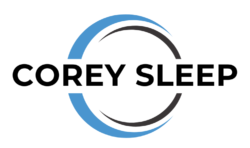At its core, the Getting Things Done (GTD) philosophy is all about freeing the mind.
Ever found it difficult to focus on one thing because you have 37 others floating around your brain?
What if I told you it’s possible to hack your brain so that the 37 other things would leave you alone until you’re ready?
That’s today’s rabbit hole: free your mind from distraction with what is probably the core of the GTD philosophy.
(If you don’t know what I’m talking about… check out my review of David Allen’s landmark productivity book)
Save Energy with a Second Brain
Anybody who’s ever tried to create – writing, scripting, filming, editing, drawing, or whatever else – knows the energy it takes to focus.
Thing is, it takes even more energy to block out a bunch of other things and focus.
Turns out, the brain sucks at multitasking.
It might be able to remember the three meetings you have tomorrow – when and where you need to go, or with whom – but if you’re relying on it to remember those things while writing the essay today and thinking about what your wife wanted you to pick up on the way home… well, you get the point.
Enter your SYSTEM.
Your system is your second brain. It includes your to-do list, your calendar, your inboxes, your habits, your rhythms, and whatever other tools you need to make sure you take care of the stuff you need to take care of so that you can take care of what needs to be taken care of RIGHT NOW and deal with the other stuff later.
In a word, a properly functioning productivity system yields freedom.
Freedom from constant urgency.
Freedom to be present, rather than distracted, and to focus on what needs to be focused on, rather than the things that can wait.
The exact tools (e.g. digital calendar vs. bullet journal, etc.) you use aren’t as important as the system/second brain fulfilling two major priorities: capturing and clarifying the things that need to get done.
Enter: Capture and Clarify
1. Capturing.
Capturing is grabbing the loose things in your brain and putting them somewhere that won’t get lost. That includes tasks, ideas that are worth reflecting on – really anything that you want to remember. (Remember the girl from the beginning? Don’t worry about her now – write down whatever you need to think about and dedicate time to her later!)
There are at least two keys to capturing effectively.
First, place whatever you capture somewhere you’ll see it. This usually means writing it down on your checklist or putting it in your to-do list app.
Second, place physical items in an inbox.
Need to file some notes for your client? Either put ‘em in the filer now, or get them in the inbox and file later.
This is capturing – and it makes sure that your brain doesn’t have to do the constant balancing act of remembering everything you need to do and actually doing the things.
2. Clarifying.
Capturing is kind of like brainstorming: it doesn’t need to be clear or figured out. We just want the info put down so that we don’t lose it or forget it.
Clarifying is the next step. It answers the question: what needs to happen next in order to close this open loop?
These are your ‘next actions.’ Like in capturing, you write these down, perhaps in the to-do list or calendar, or both.
You’ve likely heard people say that you should break down big projects into bite-sized tasks. That’s a key part of what clarifying is, and it’s a tried and tested truism in my own life for sure.
From Small to Big
I can think of a few daunting life goals that I think about almost every day.
- Get a practicum for school. (6-12 months).
- Get a counselling job (1-2 years).
- Make $$$$
But how do you deal with massive high-level goals every day of your life? Your brain would explode as anxiety puts you into constant overdrive.
The GTD method captures goals in written form (externalized), so you free your mind. Then, you clarify said goals and determine your next actions:
- Brainstorm or research a number of possible placement options.
- Record addresses and contact information.
- Inquire if they have programs.
- If yes, write/submit a cover letter.
Before you know it, I’m halfway to the bigger goal I’d been thinking about, and I got there, ironically, by thinking about it less.
“Get a counselling job” is impossibly massive and anxiety-inducing. Even getting a practicum placement stresses me out every single day if I let it.
But, “Google possibilities” is a task that is much easier and every bit as essential.
It’s a bit of a psychological trick, but it works.
The reality is this: every major accomplishment is the sum of many smaller accomplishments that add up over time.
That’s it.
That’s why goal-setting research reminds us that both big goals and small goals are important. Big ones keep us moving with our eyes towards the finish line. Small ones keep us on track when the fog and obstacles try to throw us for a loop.
So there you go. Two quickies from the master of productivity himself, David Allen, and his iconic work in Getting Things Done.
What were your major takeaways? Any life-changers you’ve found when it comes to productivity?
I’d love to hear them. Hit me up on social media or comment below!






